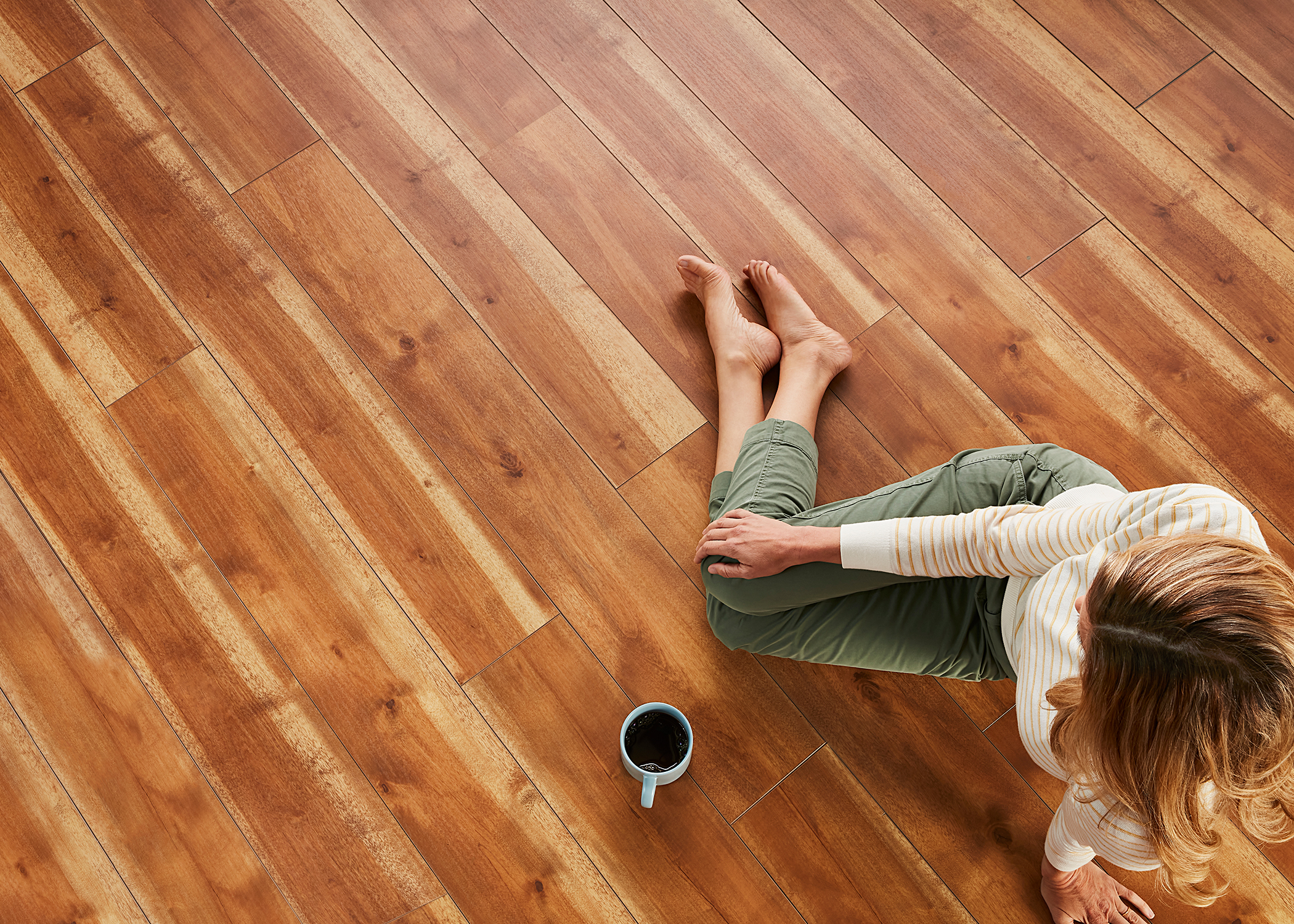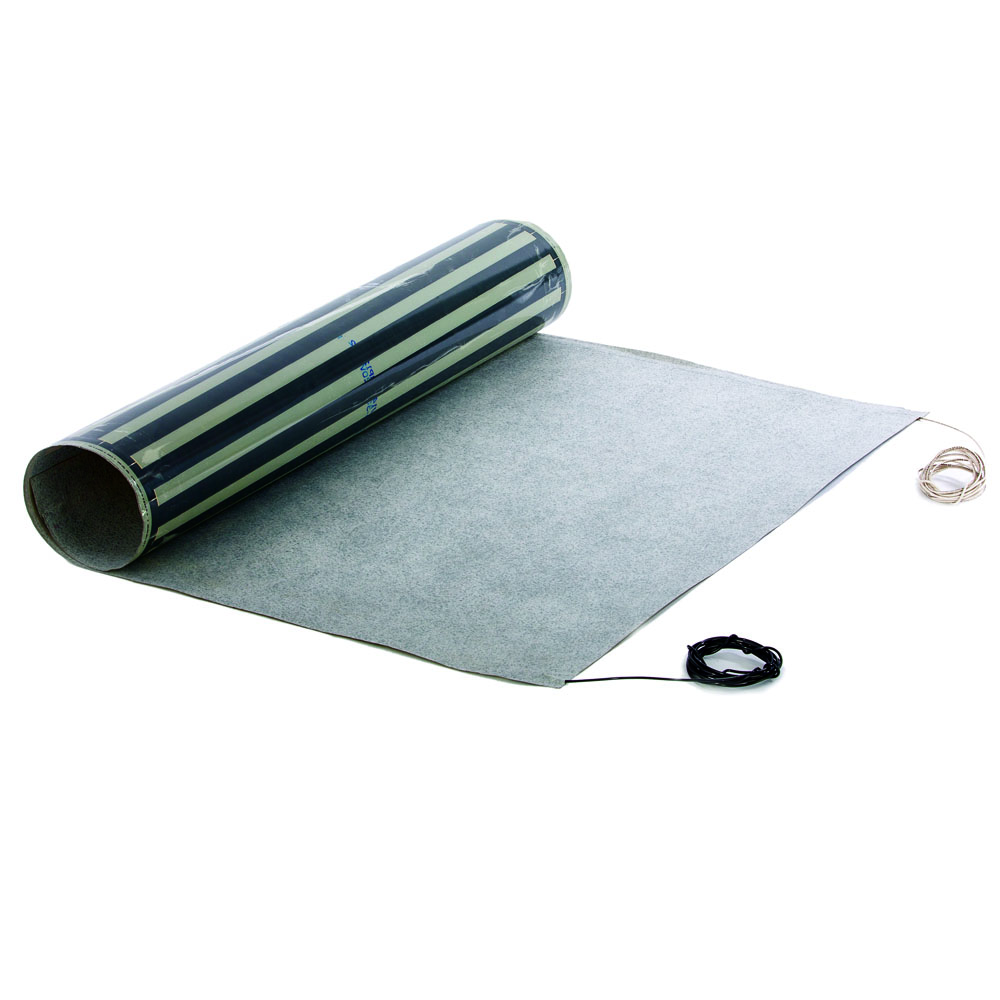- Home
- Education
- Flooring Basics
- Heated Floors: Should I Try Radiant Heat? | LL Flooring
Heated Floors: Should I Try Radiant Heat? | LL Flooring
Benefits of Radiant Heating for Floors | LL Flooring
Radiant heating for floors includes underlayment options for tile, glue-down, and floating floors. Shop for radiant floor heating underlayment at LL Flooring.
Radiant floor heating may not be the first thing that comes to mind when you’re starting a new flooring project. However, it’s a convenient option that shouldn’t be overlooked—one that not only can enhance the feel of your floor, but your entire space. This type of heating is particularly desirable for flooring that can feel cold underfoot, such as tiles, but can also be installed under a variety of other flooring materials. If you live in a climate that can get chilly, radiant heating for floors can give you that extra boost of warmth, and in some circumstances might be all you need as a heat source (for instance, in small rooms or additions).

Radiant heating for floors may sound like a big undertaking, but it doesn’t have to be. At LL Flooring, we offer a simple and budget-friendly underfloor heating solution that doesn’t add much time and effort to your installation project. Underlayment panels come in a variety of sizes for use under tile, glue-down, and floating floors.
What Exactly Is Radiant Heating?
Any time you hold your hand near a heated stove, warm your feet at a campfire, or feel the hot sun on your face, what you’re experiencing is radiant heat. In more technical terms, this type of heat is emitted—or “radiated”—directly from a source via infrared rays. This is different than the kind of heat that’s transferred through a medium, such as when a forced-air system moves heated air through the ductwork of a house or commercial building.
The two main forms of radiant heating for homes and buildings are hydronic and electric. Hydronic radiant heating uses a centralized boiler to heat water that circulates through tubing in a closed system. This heated tubing then radiates heat into the room. Hydronic systems can heat an entire home, and can involve a large initial investment. Electric radiant heating uses a cable/wire system together with panels to produce the heat.
At LL Flooring, we carry electric radiant heating underlayment panels in various sizes for a variety of flooring materials, giving you the convenient option of adding radiant heating to your project.
What Are the Pros of Radiant Heating?
Noise Reduction
Radiant heating has become increasingly popular in today’s households for a number of reasons. For one, it’s quieter than forced air. It will not wake you up with the sound of the blower kicking in. The smaller the home, the more noticeable and distracting such noise can get.
No Drafts
With radiant heating, you also won’t have to worry about drafts. In forced air heating, air is blown out into the room through vents. Even when the air is coming from a heating system, it can still send chills to your wet skin when you step out of the shower. And depending on the placement of the vents, it can be uncomfortable having a steady stream of air blowing on your face and neck. In addition to producing drafts, the process of traveling through ductwork to the vents causes the air to lose some of its heat, reducing the system’s efficiency. That’s why if you hold your hand up to a vent in a forced air heating system, the air that blows out of it usually won’t feel particularly warm.
Consistency
Rooms that are warmed with radiant heat tend to hold their warmth longer. With forced air, the room can cool rather quickly once the air stops blowing. Radiant heat is also more consistent overall, so there’s less tinkering with the thermostat.
Zones
Depending on how many different rooms have radiant floor heating, you can create different zones inside your home. For instance, perhaps at bedtime you only need to heat your bedroom and bathroom. This can be particularly useful if you also have a forced air system and would like to be able to turn it off at night.
Warmth Underfoot
Radiant heating for floors in particular creates a pleasant feel underfoot that you won’t get with forced air. It is perfect for when you have to get out of bed on a chilly night or are stepping out of your shower onto a tile floor.
Where Should I Install Radiant Heating?
As long as you’ve chosen the proper radiant floor heating product for your flooring type, you can install this kind of heating in any room of your home. In addition to the benefits listed in the above sections, this type of heating is a convenient alternative to lugging around a space heater when you just want to warm one room.
Here are a few places where radiant floor heating can be particularly beneficial:
Bathrooms
You'll often find yourself barefoot in the bathroom, so underfoot radiant heating can be a luxurious enhancement to your bathroom flooring project. Tiles in particular can get very cold to the touch on chilly days, so having a warm floor to step on will bring you a great deal of comfort. And since this heating will also radiate throughout the space, you can choose this as an option over heating the entire house when all you need is a little extra warmth in the bathroom. With a programmable thermostat, you can even make sure your bathroom is nice and heated up when you wake up in the morning.
Basements
Often the coldest room in the house, the basement is a prime candidate for radiant floor heating. Whether you use the room for your workouts, relaxing in front of the TV, or for entertaining, radiant heating will make your basement a more pleasant place to spend time in. And of course, if your basement doubles as a spare bedroom, radiant floor heating will help make it more cozy.
Bedrooms
The quietness of radiant heating for floors means you won’t be woken in the middle of the night by the sound of forced air. And when you get out of bed in the morning, you’ll enjoy the feel of warm flooring under your bare feet.
Additions and Enclosed Patios
Often additions to your home aren’t connected to your central heating system. If you’re planning to build an addition or are changing out the flooring in an existing one, consider adding radiant floor heating to the project. This is useful for cold climates, of course, but also for areas with seasonal changes because it will allow you to get year-round use out of spaces such as enclosed patios.
Radiant Floor Heating Underlayment
At LL Flooring, we offer two types of radiant floor heating mats—QuietWarmth Peel and Stick panels and QuietWarmth Film panels. These panels come in a variety of sizes with a choice of 120V or 240V power configurations. Be sure to consult the Warranty, Installation, and Care Guide of your flooring to determine if it’s compatible with radiant heating, and also check the underlayment guide for more detailed limitations and instructions. As this is a product that involves wiring to a thermostat, it’s best to have it installed by a qualified professional.

Peel and Stick Panels
Our peel and stick panels are for installation under tile and glue-down floors. After affixing the panel to your subfloor, you'll cover it with either mortar or glue, depending on the type of flooring you'll be placing on top.
Panels for Click-Together Floors
Film panels. This type of panel is the easiest to install, since it doesn't require mortar, glue, or self levelers. Roll these out under click-together floating floors such as laminate, floated engineered wood, vinyl, and cork. As with peel and stick panels, you shouldn't use these on walls or under carpet, sheet vinyl, or nailed wood floors.
Controlling Your Radiant Floor Heating
You’ll need a thermostat to control your radiant floor heating. We offer programmable QuietWarmth thermostats to use with your QuietWarmth mats, including a Wifi compatible option that can be operated via your smartphone. This gives you the convenience of pre-heating a room while you’re away.
Is Radiant Heating Cost Effective?
Radiant heating underlayment is a budget-friendly way to incorporate radiant heating into your flooring installation. Since these are individual panels, you’ll have flexibility in terms of how large of an area you wish to cover. And although not unique to radiant heating panels, you'll also have flexibility in your thermostat options. There are many reasons to try radiant flooring in your home, and there’s no better time than when you’re replacing your floors.
You can find our radiant floor heating options in the underlayment and padding section of our website. Also browse Flooring 101 for more information about different flooring and underlayment types, and to find helpful installation tips. If you have further questions about whether radiant heating will work for your flooring project, call 1-800-227-4036 to speak to one of our flooring experts today.